It’s a miracle, says Pastor Galván as we talk about the sudden recovery of Alfredo Ortiz, one of the mental patients in his asylum in Juárez. The problem is that I don’t believe in miracles. So how did this man recover from three months of being catatonic?
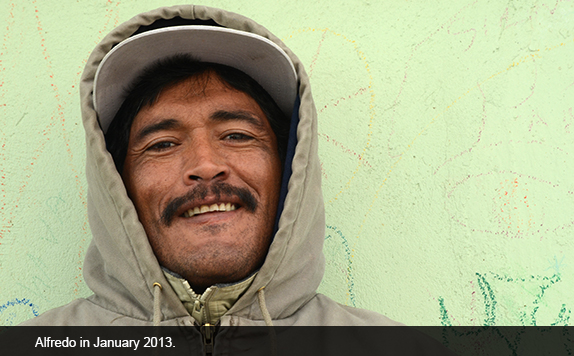
Alfredo was born in Juárez on June 9, 1977, appears to be a humble young man and is a skillful worker. In April 2012, his family committed him to Vision in Action, this private mental asylum founded by Pastor Galván. No one knows exactly what his mental problems are but I was told that he and a friend picked on some kids in his neighborhood almost ten years ago. Unfortunately for them, these kids were friends of a man named Oscar López who was a killer for the Azteca gang. He beat Alfredo and his friend so badly, slamming their heads into a wall, that the friend has never recovered and Alfredo suffered brain damage.
By coincidence, Oscar was later admitted to Vision in Action. The intake form indicates that he weighed 250 kilos or about 550 pounds. He died there of a heart attack before Alfredo’s admission.
To me, Alfredo seemed one of the shyer patients, always with a small smile on his face. He also loved to be photographed.
Then a few months after I first met him, a woman named Cinthia Lucero was committed to the asylum. Eight years younger than Alfredo, she was also born in Juárez but moved to El Paso when she was a baby and then to Poncha City, Oklahoma where she got into drugs, had a baby and ended up in a series of treatment centers.
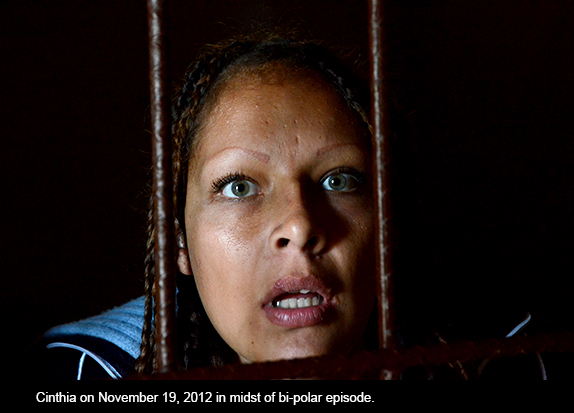
Cinthia is bi-polar and subject to sudden outbursts. Often she had to be put in a cell to calm her. She was also the only patient I’ve ever seen attack another patient, something that is amazing given the crowded conditions.
Soon Alfredo and Cinthia became a pair, a curiosity given her dominant personality. Every time I visited, they wanted to be photographed. Then she left. Back to her family? No one knows. Given her explosive personality, I don’t see a happy ending for her.
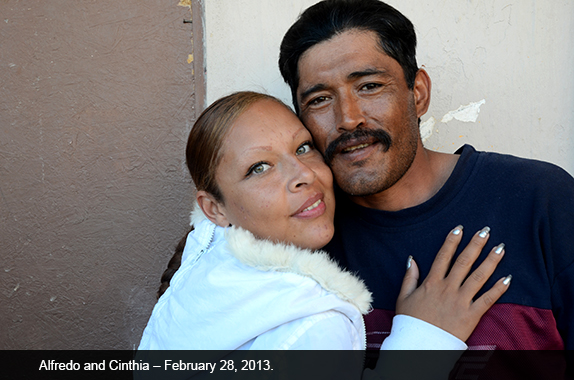
Alfredo seemed unaffected at first. He began to work in the new shop and was a very good worker, always quiet and smiling. When I visited last August, I was told that he was sick. I assumed that meant something minor like a cough or upset stomach so I didn’t go looking for him.
The next month I was told that he was still sick so I found him in a cell, shirt off, his eyes closed, totally immobile. I sat with him, thinking that he might recognize my voice. Finally a patient named Piero appeared with a cigarette and put it between Alfredo’s lips. He moved one hand to hold the cigarette, took a few puffs but never opened his eyes or spoke or changed his body position.
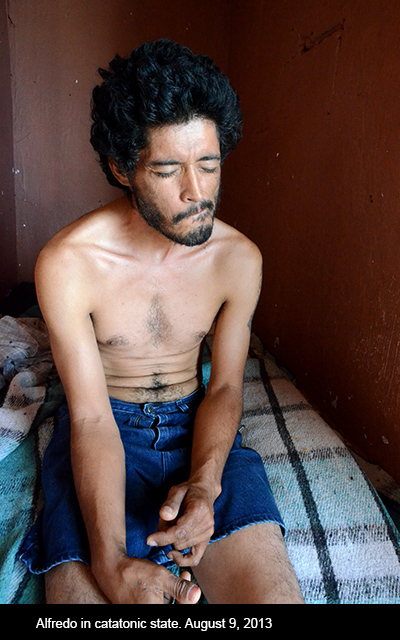
In September, Alfredo looked basically the same – that is, catatonic - except that his hair was much longer. During these three months, Dr. Pantoja would check on him, Beto who works for Pastor Galván and a patient named Josué would give him water, bath him and feed him. Galván prayed for him. They saved his life.
What’s particularly interesting is the role of Josué. He is an ex-addict, was brought to the asylum in a stretcher near death and had earlier served almost ten years in various California prisons including San Quentin. Under the care of Pantoja and Galván, he recovered and is now caring for patients like Alfredo.
When I visited on October 3, Alfredo was standing in the patio with the other patients but still seemed like a zombie, just staring but unable to talk. On October 28, he was back in the shop, his hair trimmed, a Texas hat on his head and a big smile on his face. He had no recollection of these 3 lost months.
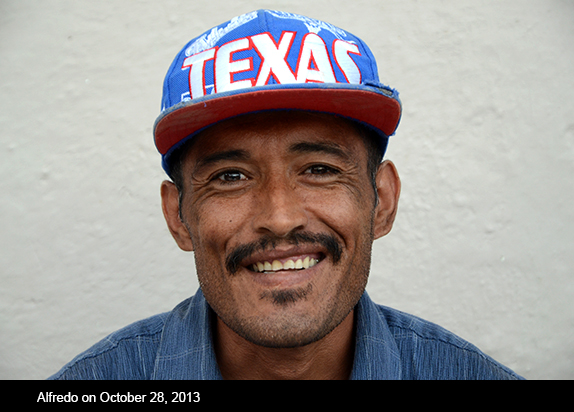
What happened? Why did he recover? No one knows. Pastor Galván calls it a miracle. I still don’t believe in miracles but what else could this be? I do believe that the care and affection Dr. Pantoja, Pastor Galván, Beto, Josué and others showed had a positive effect.
There is another aspect to this story, however. It’s the comparison between how Alfredo was essentially brought back to life by the care he received and New Mexico where, despite having many times more money per patient than Pastor Galván, Governor Martinez and her administration have embarked on a cold hearted process of tearing the mental health system apart with no regard for its thousands of patients and dedicated mental health professionals and no clear legal justification. The New Mexico story is far from over but it’s a story about money – the money that can be made off patients who are unable to fend for themselves. Alfredo’s story is about care and affection. Which would you rather have?



Responses to “The Miracle of Alfredo”